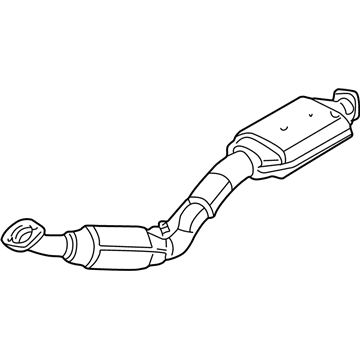FordParts
My Garage
My Account
Cart
OEM 2005 Lincoln Aviator Catalytic Converter
Cat. Converter- Select Vehicle by Model
- Select Vehicle by VIN
Select Vehicle by Model
orMake
Model
Year
Select Vehicle by VIN
For the most accurate results, select vehicle by your VIN (Vehicle Identification Number).
1 Catalytic Converter found
2005 Lincoln Aviator Catalytic Converter Part Number: 3C5Z-5F250-AA
Product Specifications- Other Name: Converter Assembly; Exhaust Pipe; Converter & Pipe
- Base No.: 5F250
- Item Weight: 14.50 Pounds
- Item Dimensions: 14.4 x 11.0 x 17.7 inches
- Condition: New
- Fitment Type: Direct Replacement
- SKU: 3C5Z-5F250-AA
- Warranty: This genuine part is guaranteed by Ford's factory warranty.
2005 Lincoln Aviator Catalytic Converter
If you're seeking quality and affordability, look no further than our extensive inventory of genuine 2005 Lincoln Aviator Catalytic Converter available at FordPartsDeal.com. You can confidently purchase our OEM 2005 Lincoln Aviator Catalytic Converter as they are supported by the manufacturer's warranty and our hassle-free return policy, alongside the benefit of our fast delivery service.
2005 Lincoln Aviator Catalytic Converter Parts Q&A
- Q: How should one service the catalytic converter to prevent deterioration and ensure proper installation on 2005 Lincoln Aviator?A: Rubber will disintegrate when oil-based lubricants are deposited on the isolators when servicing the catalytic converter. Install new fasteners of a given torque. Install the exhaust system, remove pieces and make bolts tight to desired values. Clean mating surfaces, fit sensors with anti-seize and, after reassembling, check leaks.













